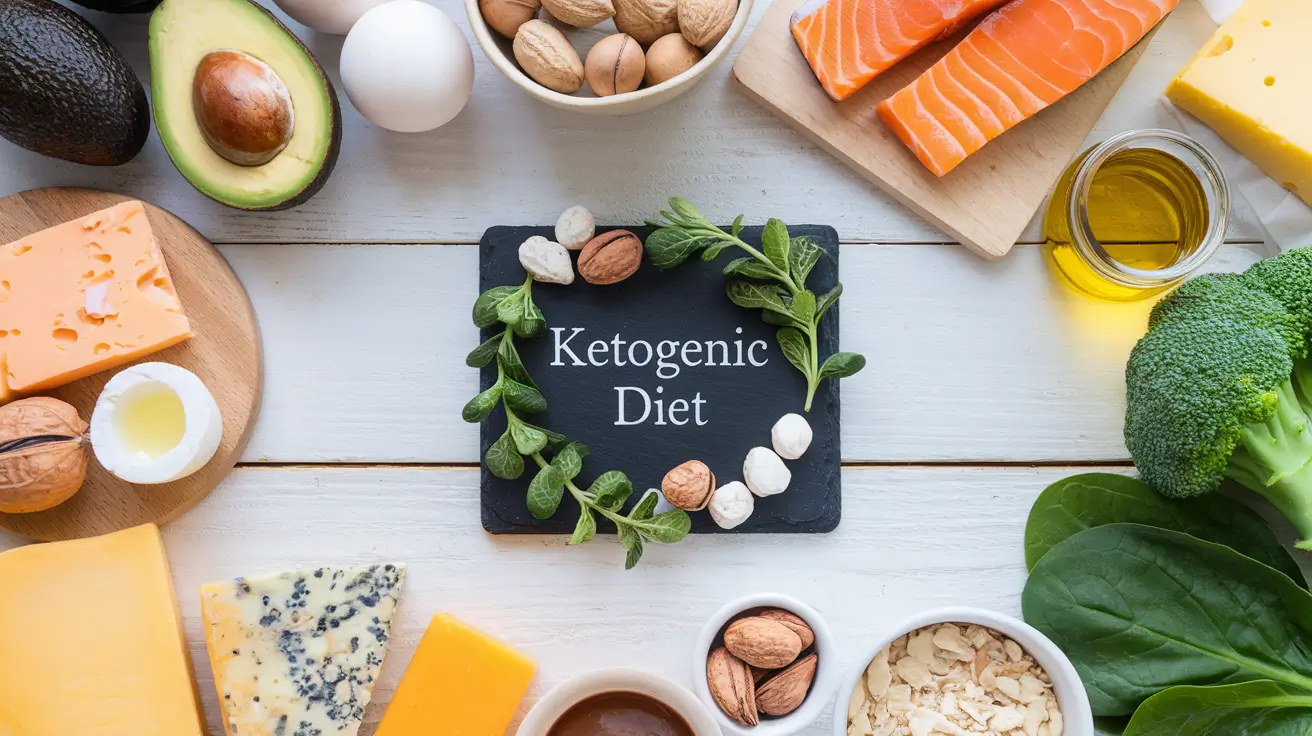Ketogenic Diet for Beginners: Complete Keto Guide & Meal Plan

Table of Contents
- Introduction
- What is the Ketogenic Diet?
- How Ketosis Works
- Benefits of Ketosis and the Keto Diet
- Foods to Eat and Avoid
- Sample Keto Meal Plans
- Potential Side Effects and How to Mitigate Them
- Common Myths and Misconceptions
- FAQ: Starting and Maintaining a Ketogenic Diet
- Conclusion
Introduction
The ketogenic diet, often referred to as “keto,” has gained significant popularity in recent years as a potential solution for weight loss and improved health. This low-carb, high-fat diet has been the subject of numerous studies and has shown promise in treating various medical conditions. In this comprehensive guide, we’ll explore the ins and outs of the ketogenic diet, helping beginners understand how to start and maintain this lifestyle change.
What is the Ketogenic Diet?
The ketogenic diet is a high-fat, moderate-protein, and very low-carbohydrate eating plan. It typically consists of:
- 70-80% of calories from fat
- 20-25% of calories from protein
- 5-10% of calories from carbohydrates
This macronutrient ratio is designed to shift your body’s primary fuel source from glucose (derived from carbohydrates) to ketones (derived from fat). This metabolic state is called ketosis.
How Ketosis Works
Ketosis is a natural metabolic state in which your body burns fat for fuel instead of carbohydrates. Here’s how it works:
- When you drastically reduce carbohydrate intake, your body’s glucose stores become depleted.
- In the absence of glucose, your liver begins to convert fatty acids into ketone bodies.
- These ketones become the primary source of energy for your body and brain.
- As your body adapts to using ketones for fuel, you enter a state of nutritional ketosis.
This process typically takes 2-4 days of following a strict ketogenic diet, although the time can vary from person to person.
Benefits of Ketosis and the Keto Diet
The ketogenic diet has been associated with numerous potential health benefits:
- Weight loss: By reducing insulin levels and increasing fat burning, keto can lead to significant weight loss.
- Improved insulin sensitivity: Lowering carb intake can help regulate blood sugar levels and improve insulin sensitivity.
- Increased energy and mental clarity: Many people report improved focus and sustained energy levels once adapted to ketosis.
- Reduced inflammation: A ketogenic diet may help reduce inflammation in the body, which is linked to various chronic diseases.
- Potential neuroprotective effects: Some studies suggest that ketosis may have protective effects on brain health.
- Management of certain medical conditions: The keto diet has shown promise in managing epilepsy, type 2 diabetes, and polycystic ovary syndrome (PCOS).
Foods to Eat and Avoid
To successfully follow a ketogenic diet, it’s crucial to understand which foods to include and which to avoid.
Foods to eat:
- Meats: Beef, pork, lamb, poultry
- Fatty fish: Salmon, tuna, mackerel
- Eggs
- High-fat dairy: Cheese, butter, heavy cream
- Nuts and seeds: Almonds, walnuts, pumpkin seeds
- Low-carb vegetables: Spinach, kale, broccoli, cauliflower
- Healthy oils: Olive oil, coconut oil, avocado oil
- Avocados
- Berries (in moderation): Strawberries, raspberries, blackberries
Foods to avoid:
- Grains and starches: Wheat, rice, pasta, cereal
- Sugar and sweeteners: Table sugar, honey, agave, maple syrup
- Most fruits: Apples, bananas, oranges
- Root vegetables: Potatoes, carrots, sweet potatoes
- Legumes: Beans, lentils, chickpeas
- High-carb sauces and condiments
- Alcohol (most types)
- Unhealthy fats: Processed vegetable oils, margarine
Sample Keto Meal Plans
Here’s a sample 3-day meal plan to help you get started:
Day 1:
- Breakfast: Scrambled eggs with spinach and feta cheese
- Lunch: Chicken salad with mixed greens, avocado, and olive oil dressing
- Dinner: Baked salmon with asparagus and butter
Day 2:
- Breakfast: Keto smoothie (almond milk, spinach, avocado, protein powder)
- Lunch: Tuna salad stuffed avocados
- Dinner: Beef stir-fry with low-carb vegetables
Day 3:
- Breakfast: Bacon and cheese omelet
- Lunch: Lettuce wraps with turkey and cheese
- Dinner: Pork chops with roasted Brussels sprouts
Potential Side Effects and How to Mitigate Them
While the ketogenic diet can offer numerous benefits, some people may experience side effects, especially during the initial adaptation phase. These can include:
- Keto flu: Symptoms like fatigue, headache, and irritability. Mitigate by staying hydrated and increasing electrolyte intake.
- Constipation: Increase fiber intake from low-carb vegetables and stay hydrated.
- Bad breath: This usually subsides as your body adapts. Maintain good oral hygiene in the meantime.
- Nutrient deficiencies: Ensure a varied diet and consider supplementation if necessary.
- Muscle cramps: Increase magnesium intake and stay hydrated.
Common Myths and Misconceptions
- Myth: Keto is a high-protein diet.
Reality: It’s a high-fat, moderate-protein diet. - Myth: You can eat unlimited calories on keto.
Reality: Calorie balance still matters for weight loss. - Myth: Ketosis is dangerous.
Reality: Nutritional ketosis is different from ketoacidosis and is generally safe for most people. - Myth: You can never eat carbs again.
Reality: Some people cycle in and out of ketosis or gradually increase carbs after reaching their goals. - Myth: All fats are good on keto.
Reality: Focus on healthy fats and avoid processed, unhealthy fats.
FAQ: Starting and Maintaining a Ketogenic Diet
Q: How long does it take to enter ketosis?
A: Typically 2-4 days of strict carb restriction, but it can vary.
Q: How do I know if I’m in ketosis?
A: Common signs include decreased hunger, increased energy, and possible short-term side effects like bad breath. You can also use ketone testing strips or blood meters.
Q: Can I exercise on a keto diet?
A: Yes, but you may need to adjust your workout intensity during the adaptation phase.
Q: Is the keto diet safe long-term?
A: While many people follow keto long-term, it’s best to consult with a healthcare professional for personalized advice.
Q: Can I drink alcohol on keto?
A: In moderation, choose low-carb options like dry wine or spirits without sugary mixers.
Conclusion
The ketogenic diet offers a unique approach to nutrition that can lead to significant health benefits for many people. By understanding the principles of ketosis, carefully selecting your foods, and being prepared for potential challenges, you can successfully embark on your keto journey. Remember to consult with a healthcare professional before making significant changes to your diet, especially if you have pre-existing health conditions.
Would you like me to explain or elaborate on any specific part of this article?




